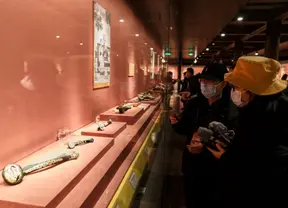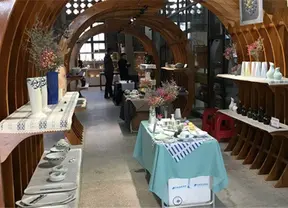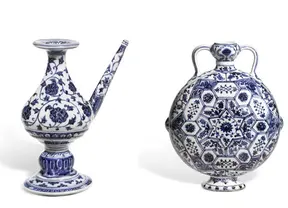
The Palace Museum houses more than 2,000 ruyi, or carved decorative objects, from the Ming and Qing dynasties that are made of jade, bamboo, metal, dental bones and porcelain. A selection of 158 piece

ThethreeconsecutiveemperorsofQingDynasty(1644-1911),Kangxi,hissonYongzhengandgrandsonQianlong,wereknownaskeenartpatronsandconnoisseurswhothroughdecadesbuiltanim

ABritishChinesecollectorsaidFridaythathewillbringmorethan100piecesofChineseexportporcelainhecollectedoverthepastthreedecadesbacktoChinaforatouringexhibition,and

AcourtinTianjinhasdecidedtoauctionahousedecoratedwithceramicchipsonAugust8topayoffitslandlord'sdebt.ThePeople'sCourtofDongliDistrictinTianjinpreviouslyplannedto

The thought of porcelain often conjures up memories of dainty, old-fashioned vases gathering dust in your grandparents' antique display case. That's what makes the newest precinct in the city known as China's porcelain capital so unexpected. Some of Jingdezhen's disused porcelain factories have been converted into studios, bars, and retail space. The industrial red-brick buildings are separated by wide walkways, making it ideal for strolling between trendy cafes and contemporary ceramics galleries.

The total estimated value is more than HK$225 million ($28.8 million).

About a century ago, the porcelain crafts from Jingdezhen in east China's Jiangxi Province were among the most sought products in Europe, with nobility paying vast sums to obtain the treasures.

Until recently the tiny village of Jinkeng was like many rural settlements in east China: a dwindling population, and those that remained worked in the informal sector. However, this changed for the better when some of the oldest, most well-preserved examples of pottery production methods in China were discovered during an archaeological survey last June.